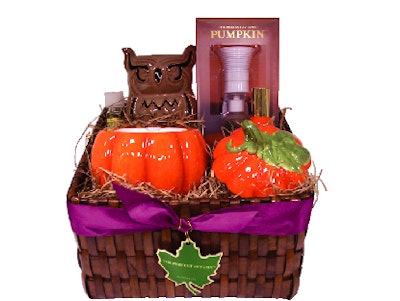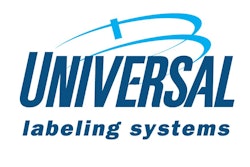Want contract packaging to become a more innovative part of your package-development effort? Ask 10 companies how to do it, and you’ll probably get as many different answers. The approach varies for each consumer packaged goods (CPG) company, for divisions within companies, and by product category.
But talk to enough companies, and some common themes begin to emerge for suggesting where your co-packers can implement innovative measures with real impact on the bottom line—and that also assure the best possible package for helping your company’s marketing team boost sales.
The approaches set forth in this article, from Beauty Avenues-Limited Brands (Bath & Body Works), Procter & Gamble, and Coca-Cola, certainly are not the only paths to innovation. But they reflect the thinking of CPG companies at the forefront of contract packaging.
Among the ideas discussed below, you’re sure to find opportunities for sharpening your own approach to innovation.
Limited Brands:
Design for manufacturability
There are more opportunities than many CPG companies realize where external sources can bring innovation to the table, says Doug Miller, a contract packaging industry veteran. Miller, manager of production and operations at Beauty Avenues-Limited Brands, says the best results from co-packing are more likely to occur by focusing on three core ideas:
1. Look at the big picture and build trusting, long-term relationships where performance is reviewed frequently.
2. Urge all relevant departments within your company to look at cost considerations outside of their area of responsibility. How can you save a few pennies per unit and still get what you want?
3. Qualify co-packers on criteria from a cross-section of requirements. Lowest price is not the only essential measuring stick. Look for packagers that are quick, agile, willing to be experimental, and that immerse themselves in the creative process. In the end, they could save you more money than by merely going with the lowest price.
Too many CPG companies view contract packaging as a traditional buyer-vendor relationship, Miller says. He adds that Beauty Avenues, which handles contract packaging and filling for retailers including Bath & Body Works, has found that this way of thinking works well for some product manufacturers, but it doesn’t give enough early attention to matters beyond cost considerations. In more complex packaging projects, the traditional approach can waste time and money, he adds—and such complexity is becoming a requirement among retailers demanding capabilities such as repacking to provide custom products and displays.
Custom health and beauty gift sets give Bath & Body Works its cachet as a specialty retailer; the company sold about 10 million of them during the 2007 holiday season. But they require a lot of coordination to make cost-effectively and to deliver on time. Each style of gift set requires several runs, sometimes in quantities of 2,000 or less. And some of the sets are distributed to only a portion of the chain’s 1,600 U.S. stores.
Early input is essential from the two contract assemblers and up to a dozen contract fillers that fill and package Bath & Body Works products, to simplify the complexities of product creation, production, and distribution, Miller stresses. This differs from the traditional product manufacturer-contract packager relationship, in which the creative process often is completed before the purchasing department solicits bids for co-packers merely to pack the product according to specifications. In the latter scenario, the co-packer doesn’t enter the design picture.
"Eighty percent of our gift-set costs are established at the point of design. So we have the possibility for savings on only the other 20% if I go to a traditional bid," Miller says. "We’ve redefined contract packaging to be more of a partner at the beginning, for ideas in improved quality, improved cost, and improved speed-to-delivery during the design."
Beauty Avenues, a division of Limited Brands, develops Bath & Body Works products and manages the packaging and filling operations for the retailer, working with its merchandising and merchandise planning groups. Then Limited Logistics Service, another branch of Limited Brands, handles transportation and distribution. But none of these entities has manufacturing capability, and they’re always on the lookout for ideas that can improve design’s functionality throughout the supply chain. That’s where contract packagers and fillers pay huge dividends, Miller notes.
Orders for Bath & Body Works products are filled through one of two methods: engineered-to-order and standard replenishment. The gift sets are primarily engineered-to-order products made for seasonal distribution. Beauty Avenues procures creams, liquids, and the bottles and other containers, and directs them to contract fillers, where the primary packages are filled. Beauty Avenues also purchases all the packaging components. Filled bottles and packaging components, some from overseas, are sent to Accel (www.accel-inc.com) and NFI-Quick Pak Packaging Services (www.multicolorcorp.com/solutions/packagingservices/index.html) for assembly into gift sets.
Early creative talks
The process of creating gift sets starts with Bath & Body Works’ design group and merchant and planning organizations. These groups evaluate product needs and conduct sales forecasts. Next, they approach Beauty Avenues to create the appropriate sets.
"They say, ‘We need gift set ideas. What can you do, and how and when,’ and Beauty Avenues works with our suppliers to come up with ideas for them," Miller says.
At this early stage, contract assemblers can influence the design. They’re on a development team with Beauty Avenues and Bath & Body Works’ merchant and planning organizations, and their input often trims production costs and improves margins.
"For one gift bag set, the bags were sourced from overseas. Our contract assembler advised us to make sure that the bags are arriving at their plant with the zipper in the open position," he explains. "It’s a simple thing, but it saves 2 cents per unit and eliminates a production step on 200,000 units.
"And second, the orientation of the way the components are packed coming in from overseas improves efficiencies on the packing line. We are dealing with breakables, so we get our assemblers’ input in design for the best packing and to prevent product from breaking while coming from overseas. They also suggest ways to reuse the protective packaging and help Limited Brands practice sustainability."
Replenishment, the other form of product fulfillment at Bath & Body Works, requires routine restocking of single-unit products. Beauty Avenues manages about a dozen contract fillers for the quality, inventory, and timeliness of production of liquids, creams, and both alcohol-based and nonalcohol-based formulas. Package design and filling procedures involving outside vendors resemble those for assembly operations.
But whether products are engineered-to-order or handled through replenishment, Beauty Avenues-Limited Brands requires that its assemblers and fillers share responsibility for maintaining quality.
Ninety percent of the quality control begins prior to assembly, Miller says. In the design phase, for example, Beauty Avenues works with Bath & Body Works’ design group to determine what each gift set should look like. Assemblers confirm whether the design will resist damage during shipping, and that it will pass regulatory requirements.
Detailed specifications guide how the gift sets are to be built. "It comes down to a very detailed list," Miller says, "even to the point of specifying where to place the hangtag."
With specifications in hand, the assembly centers produce a preproduction sample of a gift set. Beauty Avenues sends the design sample to Bath & Body Works for approval. The approved set provides specifications that become a standard operating procedure.
"Every gift set has to match that standard," Miller says. "Once production is started, we get a ‘top’—the first product off the line—to match up with the sample. Our assemblers also assure that the set passes a drop test and is compatible with our distribution equipment. If we design it so there’s only one right way to build it, the likelihood of something going wrong is much less."
P&G’s platforms for innovation
"Billion-dollar brand" is the benchmark for a successful product at P&G, and the consumer products giant has 23 of them. How did these brands reach this pillar of strength? CEO A.G. Lafley describes them as "global leaders" that are "platforms for innovation."
The building blocks for success in this approach are embedded in all functions in the product and packaging development cycles. Fundamental is that P&G is a consumer research company in addition to being a marketer of consumer products. It invests $200 million annually in consumer research.
Out of this research, P&G has identified two critical points in the product life cycle that are pivotal in sustaining sales. P&G has given each one a name. The First Moment of Truth occurs at the point when the product is sold. The Second Moment of Truth happens each time the product is used. The objective is to create products that make consumers’ lives easier and also are desirable to retailers.
Each of these critical interactions between consumer and product—marketers refer to them as "touch points"—create opportunities to introduce or extend products. And they present P&G with the challenge of how to bring products to market. In its evolving product and packaging culture, P&G is using an open innovation strategy called "Connect & Develop." Contract packagers and fillers that buy into this approach go far beyond filling, assembling, and packaging. They immerse themselves in P&G’s new mind-set to build a strong and continual innovation pipeline, says David Elliott, purchasing group manager.
Connect & Develop, along with P&G’s changing culture in responding to the marketplace, provides a lot of opportunities for external contributions, Elliott says. Once opportunities are identified, P&G is relying more heavily on product, packaging, and equipment answers from outside sources, including contract packagers and fillers.
"Ten years ago, the answer at Procter was, ‘If it’s not invented in Cincinnati, we are not interested,’" Elliott says. "When A.G. Lafley came in as CEO about six years ago, he very quickly threw a challenge out to the company. By 2010, he wants over 50% of the company’s innovation to come from outside. When A.G. took over, about 20% came from outside. We are currently at 35%."
This new way of thinking has reorganized P&G’s purchasing and R&D groups. They’re moving out of laboratories and "into the field" to identify opportunities to develop and co-develop products and packaging.[
The greatest opportunities in Connect & Develop, Elliott says, are for "innovation service providers." These companies can offer innovation in product development, procurement, at any point along the supply chain, and in distribution. The parameters guiding their work differ from P&G’s supply chain service providers, whose work is price-driven and entails filling operations according to P&G’s requirements.P&G follows a total-value matrix to rate contract packagers on price, quality, responsiveness, innovation capability, and the ability to create either what the company doesn’t have or doesn’t want to develop itself.
Packaging for Secret deodorant offers an example of how Connect & Develop works. After P&G developed a distinctive package for the deodorant brand, the company took the design to an external packager for mass production. Upon the new packaging reaching stores, P&G received two licensing requests, including one from a competitor seeking to use the same package design. This development led to a licensing agreement enabling the competitor to use the package design for its own product in exchange for royalties.
The second request, from a packaging supplier, led to a license with P&G to enable the packager to produce larger quantities and sell excess inventory to its own customers. The agreement enabled P&G’s package design to be shared with several other companies. It was a win-win-win; P&G benefited from royalties and lower manufacturing costs, the supplier won additional sales, and other companies benefited from increased sales using the new package design.
"The thinking is that if we are innovating, we are bringing better product to the customer," Elliott says. "Packers get a little more opportunity to play with the price. If you are bringing something forward that the customer really wants, you will be able to charge the price that supports that product."




























